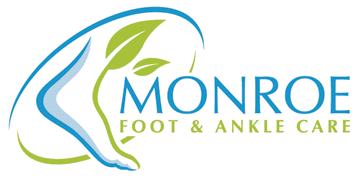Toenail fungus, medically termed onychomycosis, is a fungal infection of the toenails. The infection occurs when fungi get trapped between the nail and the nailbed, the tissue just beneath the toenail, usually through a small cut in your toe.
Toenail fungus is a common podiatric problem, especially as you age. Doctors suggest that it affects 1 in 10 people overall, jumping to 1 in 2 for those over 70.
At Monroe Foot & Ankle Care, podiatric physician and surgeon Dr. Elliott Perel and his staff understand how unsightly toenail fungus can be, which is why they offer a variety of treatments for their patients in the Monroe Township, New Jersey, area to get rid of it. Here’s what you need to know.
How does a toenail fungus infection get started?
Many kinds of fungus can cause a nail infection, but dermatophytes (a type of mold) cause the most. These microorganisms feed on the keratin in your toenails, the protein that makes them hard.
Toenail fungus can be quite contagious; it spreads either through direct contact with an infected person or by touching an infected surface. Since nail fungi live in dark, warm, and moist places, the most likely way to become infected is to walk barefoot around a swimming pool, public locker room, or shower.
If you have a fungal infection in your nail, it rarely spreads to your skin (which also contains keratin). However, it can affect skin. If the dermatophytes attack the skin first, it’s known as ringworm; when they infiltrate between the toes, it’s called athlete’s foot; and when they make it to the groin, it’s called jock itch.
Is toenail fungus preventable?
The short answer is yes, but you have to be mindful. Keep your toenails clean and dry. Wear shoes that have good ventilation, and if your socks get damp, change them. And above all, don’t walk barefoot in locker rooms, public showers, and other communal areas.
Treating toenail fungus
If you do pick up a toenail fungus, Monroe Foot & Ankle Care offers a number of options for fungus removal.
Oral antifungal medications
Antifungals are prescription medications you take by mouth every day for several months — or even longer. The most common types include terbinafine (Lamisil®), itraconazole (Sporanox®) and fluconazole (Diflucan®). These medications come with side effects, so Dr. Perel may monitor you with blood tests every so often to ensure everything’s okay. They can also interact with other medications, so not everyone can take them. Dr. Perel discusses your options with you at your consultation.
Topical medications
Topical medications are a type of varnish, and you apply them to the nail just like nail polish. They can take a long time to work by themselves, so they’re often paired with oral medications.
Laser treatments
Dr. Perel directs a laser beam at the infected toenail to destroy the fungus. Lasers are FDA-approved for “temporary increase of clear nail,” but they’re not considered a cure. In fact, cure rates using lasers are lower than both oral and topical medications, so it’s not typically used as a first-line treatment.
Surgery
If you have a severely infected nail and other treatments fail, Dr. Perel may choose to remove the nail altogether. A new nail grows in its place, but it can take up to 18 months to fully come in, as nails grow quite slowly.
Got a toenail fungus and don’t know what to do? Come to Monroe Foot & Ankle Care for a consultation with Dr. Perel. To get started, give the office a call at 732-978-9569, or book online with us today.
